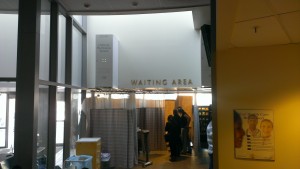
Every dreads a trip to emergency. Here’s how to improve your chance of a great ED visit.
1. Avoid busy times – Never go on Monday, the first day after a long weekend, and Sunday evenings, if possible. ED visits surge from 11:00 am until late evening. It takes another 3-6 hours for an ED to clear out. Aim for early morning or after midnight. Even the worst ED provides great service some of the time; make sure you arrive at those times.
2. Prepare your chief complaint – Do you tell your whole life story at a job interview? Don’t tell it in the ED. Summarize your concern in a few sentences.
“My stomach started to hurt after supper. It became sharp and constant overnight, and now I have a fever. It really hurts when I push right here.”
What would you ask if your child had a ‘tummy ache’?
Where does it hurt?
When did it start?
What does it feel like?
Did you get hurt? etc.
If it’s too long to memorize, it’s usually too detailed. If you were just discharged from hospital, say that first. Hopefully, you got a discharge instruction sheet.
3. Prepare your past medical history – Practice listing your diagnoses.
“High blood pressure, high cholesterol, borderline diabetes and mild asthma.”
If you had major surgery in the last 6 months, say so. “I had a kidney transplant in May.”
4. Know your medications and dosages – Memorize or write them down on a wallet card. “The little white pill,” does not help.
5. Memorize true allergies and reactions – Swollen lips with penicillin needs to be told. Find out from your family physician which things you react to, if you don’t know.
6. Bring your Health Card (Canada) – Cards expire. Update it, if you change address. If your card is invalid, you will be billed by your physician(s) and separately by the hospital.
7. Bonus points – Old ECGs, notes from your doctor(s) or hospital, X-Ray reports, descriptions of rare medical conditions…anything special about you.
Things to do after you’ve been seen, but are still in the ED:
1. Call for help if you or your family/friend gets worse. Many patients get worse. Speak up!
2. Minimize questions. Staff should have told you how long things will take. If not, ask once. Let staff work; wait until they said everything should be done (4 hours, etc). Do not ask “Are my tests back?” “When is the doctor coming?” “Where is the coffee shop?” etc.
3. Stay in your care area. Hovering at the doorway is dangerous, impolite and does not make things move more quickly.
4. Don’t take your anger or frustration out on staff. If they are rude, by all means write a letter. That will do more than getting upset at the moment, and it strengthens your feedback to leadership.
Things you can do after you’ve left the ED:
1. Call your Family Physician and deliver lab and X-Ray reports from your ED visit.
2. Let your family/friends know you were sick, so they can help and be there if you get worse.
How can you tell if you’re not an average patient?
A. You are on chemotherapy, have had an organ transplant, have an extremely rare condition cared for by sub-specialists in another center, are on a study drug, have more than 5 medical conditions, etc. Most complicated patients know they’re not average, and are professionals at navigating the healthcare system.
Patients improve the performance of even the best teams using the pointers above. Share your favorite tips for a visit to the ED by clicking on Leave a Reply or # Replies below.



